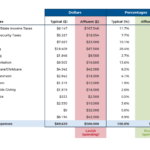Welcome to the June issue of the Latest News in Financial Advisor #FinTech – where we look at the big news, announcements, and underlying trends and developments that are emerging in the world of technology solutions for financial advisors and wealth management!
This month's edition kicks off with the not-so-surprising news that “robo-advisors” are increasingly pivoting towards offering human advisors and pursuing a more affluent (i.e., not-necessarily-Millennial) clientele, and the somewhat-more-surprising news that one new robo platform – BrightPlan – has decided to enter the marketplace by raising $25M of capital and using it to buy an existing $3.6B life-planning-oriented (and human-advisor-based) independent RIA, raising the question of whether advisor tech companies could become an entirely new buyer category in the world of advisor M&A and whether existing RIAs may actually be a superior way to distribute new technology (rather than trying to compete with them!).
From there, the latest highlights also include:
- Envestnet is beginning to reveal how it intends to leverage its Yodlee acquisition, by building out client-facing PFM (Personal Financial Management) solutions that help clients track not only their long-term financial plans, but their shorter-term cash flow and spending as well.
- Apex Clearing appears to be making a move into the independent RIA community to compete against Schwab, Fidelity, and TD Ameritrade, leveraging “robo-advisor-for-advisor” software solutions like RobustWealth and AdvisorEngine to reach financial advisors, even as Wealthfront pivots away from building on Apex.
- Morningstar appears to be working on its own financial planning software tools, though it’s not yet clear if they’ll be for financial advisors, or it “self-directed” consumer tools offered to retirement plan sponsors.
- Following on the heels of popular Social Security software for advisors, a number of providers are now building Medicare planning software solutions for advisors who want to further differentiate their expertise with retirees and justify their value proposition beyond the portfolio alone.
You can view analysis of these announcements and more trends in advisor technology in this month's column, including a fascinating look at why, exactly, performance reporting software for advisors is so expensive (the answer: a lack of quality data and poor data standards in the data feeds from custodians), whether Amazon Alexa may become a new communication channel for financial advisors to reach their clients, and the news that XY Planning Network is running its second annual FinTech competition for advisor technology startups (deadline for those who wish to enter: June 15th).
I hope you're continuing to find this new column on financial advisor technology to be helpful! Please share your comments at the end and let me know what you think!
*And for #AdvisorTech companies who want to submit their tech announcements for consideration in future issues, please submit to [email protected]!








 Welcome back to the twenty-second episode of the Financial Advisor Success podcast.
Welcome back to the twenty-second episode of the Financial Advisor Success podcast.

